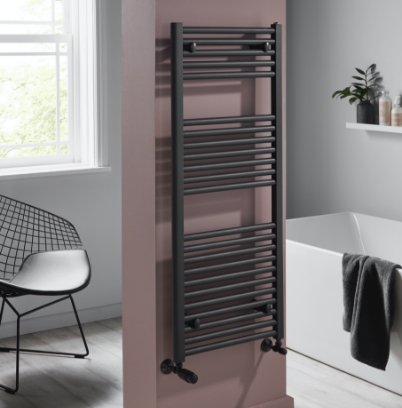Here at Towelrads.com we have everything you could want or need for your heating job. Towel radiators to column radiators and smart elements to antique finished pipe sleeves, browse the full range or use the filter within each category to only see what is relevant to you.
Our simple guide on how to bleed your radiator
Why would I need to bleed my radiator?
Over time and use air will get into the system and build up within your radiators. This causes them to be colder at the top where the air is sitting than the bottom.
What does this mean?
Having air in the system and only part of your radiator heating up means your system is running inefficiently. This means it’ll take longer to heat up your room, which in turn raises your energy bills. With todays energy prices soaring it’s worth giving your radiators a check to save yourself a few pounds.
Have a read of our simple guide below to find out how to do it yourself, or download it here to view it later.
All radiators require bleeding occasionally. Signs to look out for include uneven heat on radiator bars or the radiator taking too long to heat up.
Turn on your heating system and assess each radiator by touching the top and bottom. Check for inconsistencies with warmth of the bars. Please be careful when checking as radiators can get quite hot. Protect your hands when you’re feeling the radiator for warmth to prevent any possible injuries.
Before bleeding any of your radiators the heating system will need to be turned off. If the central heating system isn’t turned off this could result in a lot of water escaping.
Make sure the valves are fully open by turning them anti clockwise. To release the air, you will need a radiator key and a cloth. Insert your radiator key into your air vent (this is normally on the top of your radiator). Please use the cloth to protect your hands and to catch drips of water.
Turn the key slowly anti-clockwise to open the vent. Opening the vent allows trapped cold air to escape which is subsequently replaced with liquid from your heating system via the pipes connected to your heating system. As air escapes the radiator, water will likely splutter from the air vent. Use the cloth under the key to catch these.
Once water has squirted out of the air vent it means you’ve released all the trapped air. Re-tighten the vent quickly before too much water escapes, by turning the vent clockwise until sealed again. Use a cloth to wipe away any water around your radiator.
Repeat this process on all of your radiators in your house to ensure all the excess air has been drained from your heating system. It’s best to bleed all of your radiators even if you’ve only been having problems with one. For a well-maintained heating system, you should try bleeding your radiators regularly. An annual bleeding plus bleeding after any repairs or modifications to your heating system is usually adequate.
By releasing excess air from your radiators, you have lowered the overall pressure of your heating system. If the pressure has fallen too low, heat might not reach some of your radiators especially the radiators on the top floor of your house.
For residential heating purposes, a pressure level of around 12-15 psi should suffice. The higher the pressure, the greater the height that heat from your system will be able to travel. If it’s too low after bleeding, you will need to top up your boiler with water. This can be adjusted by the filling loop with instructions from your boiler manufacture.

